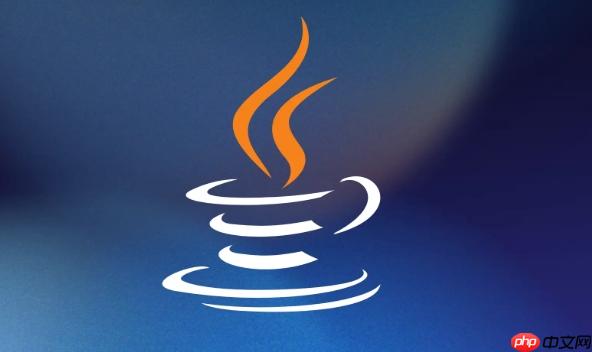多态性允许父类引用调用子类方法,提升代码灵活性和扩展性;通过继承重写、接口实现和抽象类实现多态,支持向上转型和向下转型,结合运行时多态(重写)与编译时多态(重载),广泛应用于插件系统、GUI、数据库访问和集合框架。

方法调用的多态性,简单来说,就是允许你用父类的引用指向子类的对象,然后调用相同的方法,但实际执行的是子类的方法。 这让代码更灵活,更容易扩展。
解决方案
Java实现方法调用的多态性,主要通过以下几种方式:
class Animal {
public void makeSound() {
System.out.println("Generic animal sound");
}
}
class Dog extends Animal {
@Override
public void makeSound() {
System.out.println("Woof!");
}
}
public class Main {
public static void main(String[] args) {
Animal myAnimal = new Dog(); // 父类引用指向子类对象
myAnimal.makeSound(); // 输出 "Woof!"
}
}interface Shape {
double getArea();
}
class Circle implements Shape {
private double radius;
public Circle(double radius) {
this.radius = radius;
}
@Override
public double getArea() {
return Math.PI * radius * radius;
}
}
class Rectangle implements Shape {
private double width;
private double height;
public Rectangle(double width, double height) {
this.width = width;
this.height = height;
}
@Override
public double getArea() {
return width * height;
}
}
public class Main {
public static void main(String[] args) {
Shape circle = new Circle(5);
Shape rectangle = new Rectangle(4, 6);
System.out.println("Circle area: " + circle.getArea()); // 输出 Circle area: 78.53981633974483
System.out.println("Rectangle area: " + rectangle.getArea()); // 输出 Rectangle area: 24.0
}
}abstract class Vehicle {
abstract void startEngine();
void stopEngine() {
System.out.println("Engine stopped.");
}
}
class Car extends Vehicle {
@Override
void startEngine() {
System.out.println("Car engine started.");
}
}
class Motorcycle extends Vehicle {
@Override
void startEngine() {
System.out.println("Motorcycle engine started.");
}
}
public class Main {
public static void main(String[] args) {
Vehicle car = new Car();
Vehicle motorcycle = new Motorcycle();
car.startEngine(); // 输出 Car engine started.
motorcycle.startEngine(); // 输出 Motorcycle engine started.
car.stopEngine(); // 输出 Engine stopped.
}
}多态性在实际开发中非常有用,尤其是在需要处理不同类型的对象,但又希望以统一的方式进行操作时。
立即学习“Java免费学习笔记(深入)”;
Component
Component
Collection
ArrayList
HashSet
向上转型(Upcasting)和向下转型(Downcasting)是与多态性密切相关的两个概念。
Animal animal = new Dog(); // 向上转型
instanceof
ClassCastException
Animal animal = new Dog();
if (animal instanceof Dog) {
Dog dog = (Dog) animal; // 向下转型
dog.bark(); // 假设 Dog 类有一个 bark() 方法
}如果不进行类型检查,直接进行向下转型,可能会抛出
ClassCastException
Animal animal = new Animal(); Dog dog = (Dog) animal; // ClassCastException: Animal cannot be cast to Dog
因此,在进行向下转型时,务必谨慎,并使用
instanceof
Java中的多态性可以分为两种:运行时多态(Runtime Polymorphism)和编译时多态(Compile-time Polymorphism)。
class Calculator {
public int add(int a, int b) {
return a + b;
}
public double add(double a, double b) {
return a + b;
}
}
public class Main {
public static void main(String[] args) {
Calculator calculator = new Calculator();
System.out.println(calculator.add(2, 3)); // 调用 add(int, int)
System.out.println(calculator.add(2.5, 3.5)); // 调用 add(double, double)
}
}Animal
Dog
总的来说,编译时多态发生在编译阶段,通过方法重载实现;运行时多态发生在运行阶段,通过方法重写实现。 运行时多态更加灵活,可以实现更加动态的行为。
以上就是如何在Java中实现方法调用的多态性的详细内容,更多请关注php中文网其它相关文章!

每个人都需要一台速度更快、更稳定的 PC。随着时间的推移,垃圾文件、旧注册表数据和不必要的后台进程会占用资源并降低性能。幸运的是,许多工具可以让 Windows 保持平稳运行。

Copyright 2014-2025 https://www.php.cn/ All Rights Reserved | php.cn | 湘ICP备2023035733号